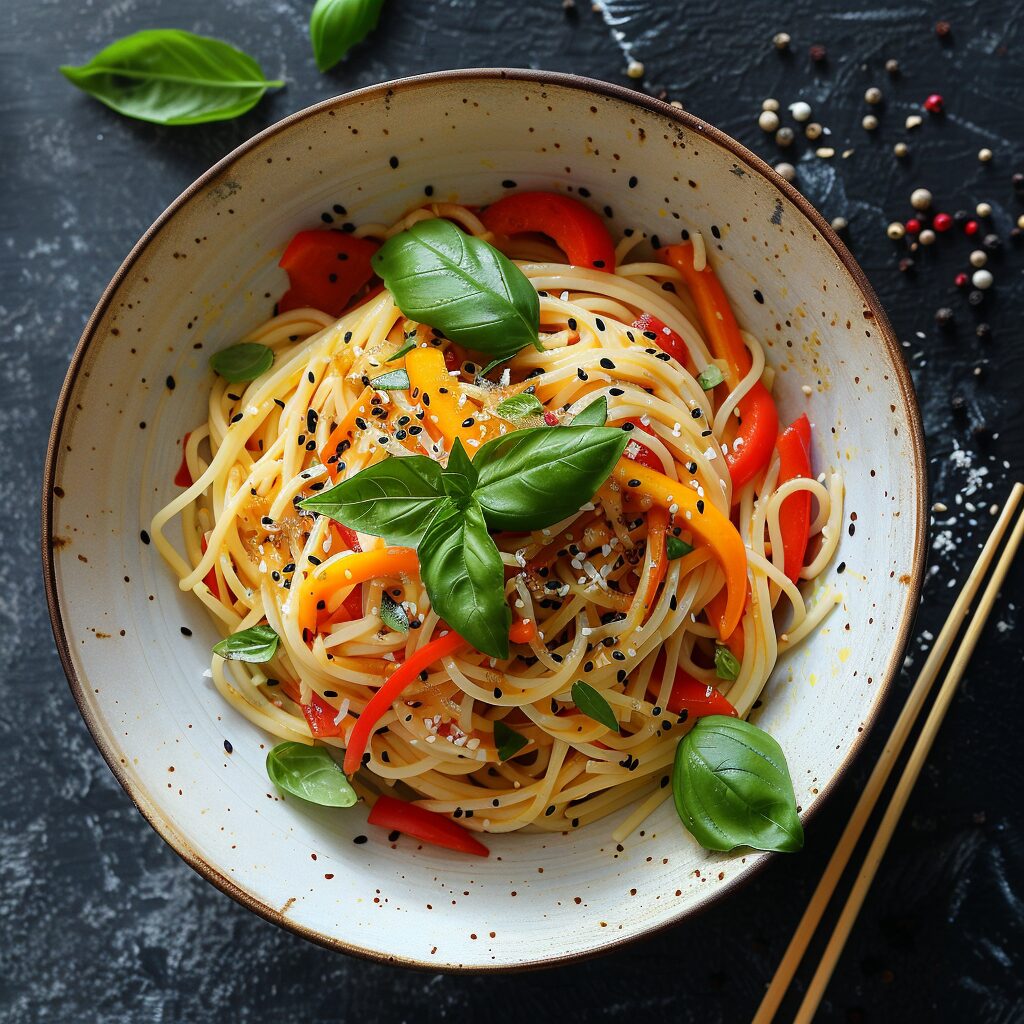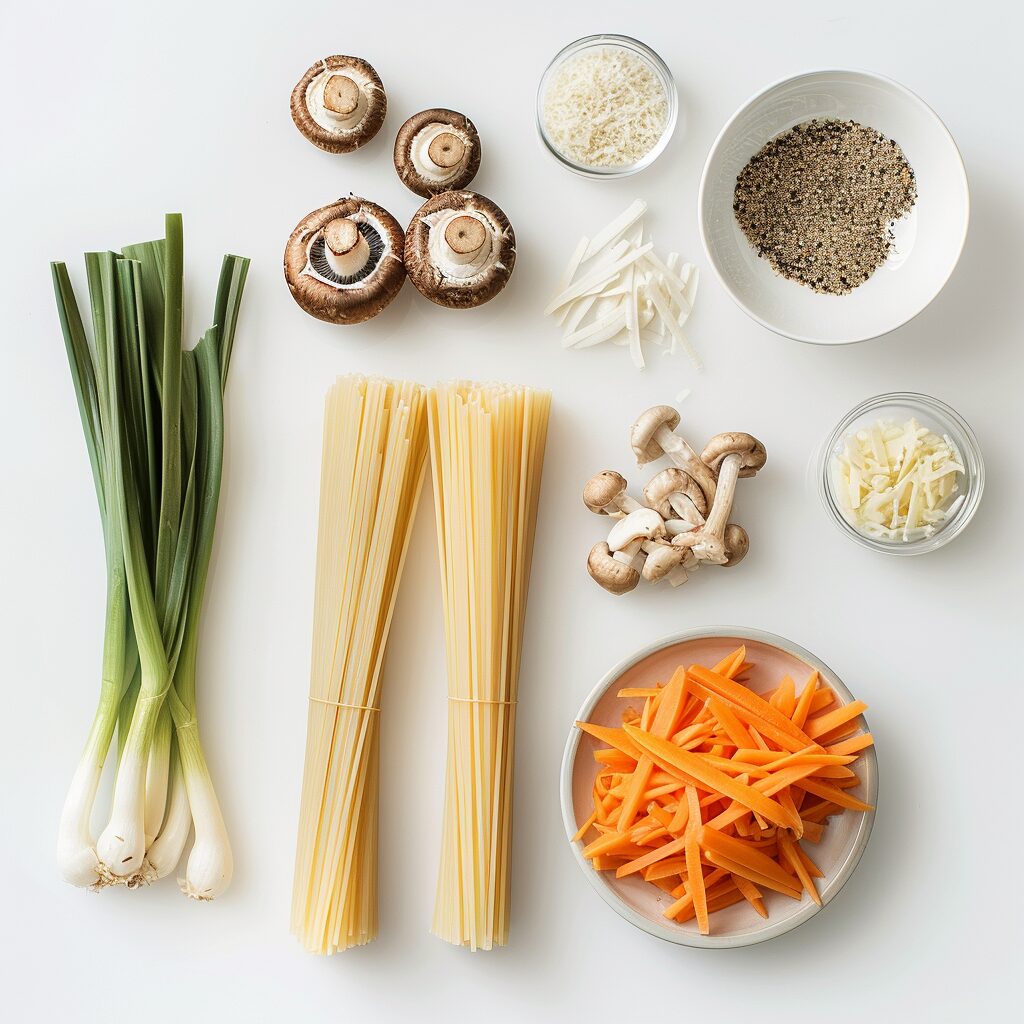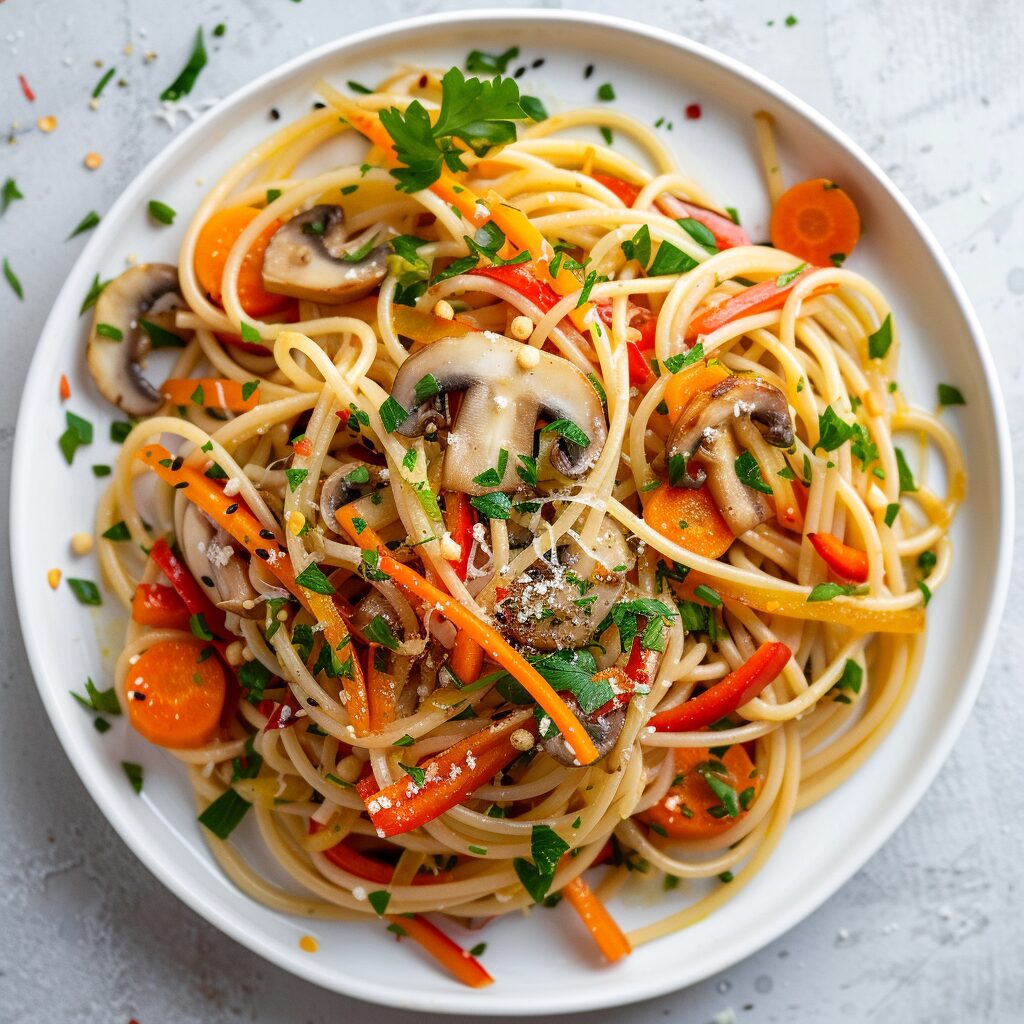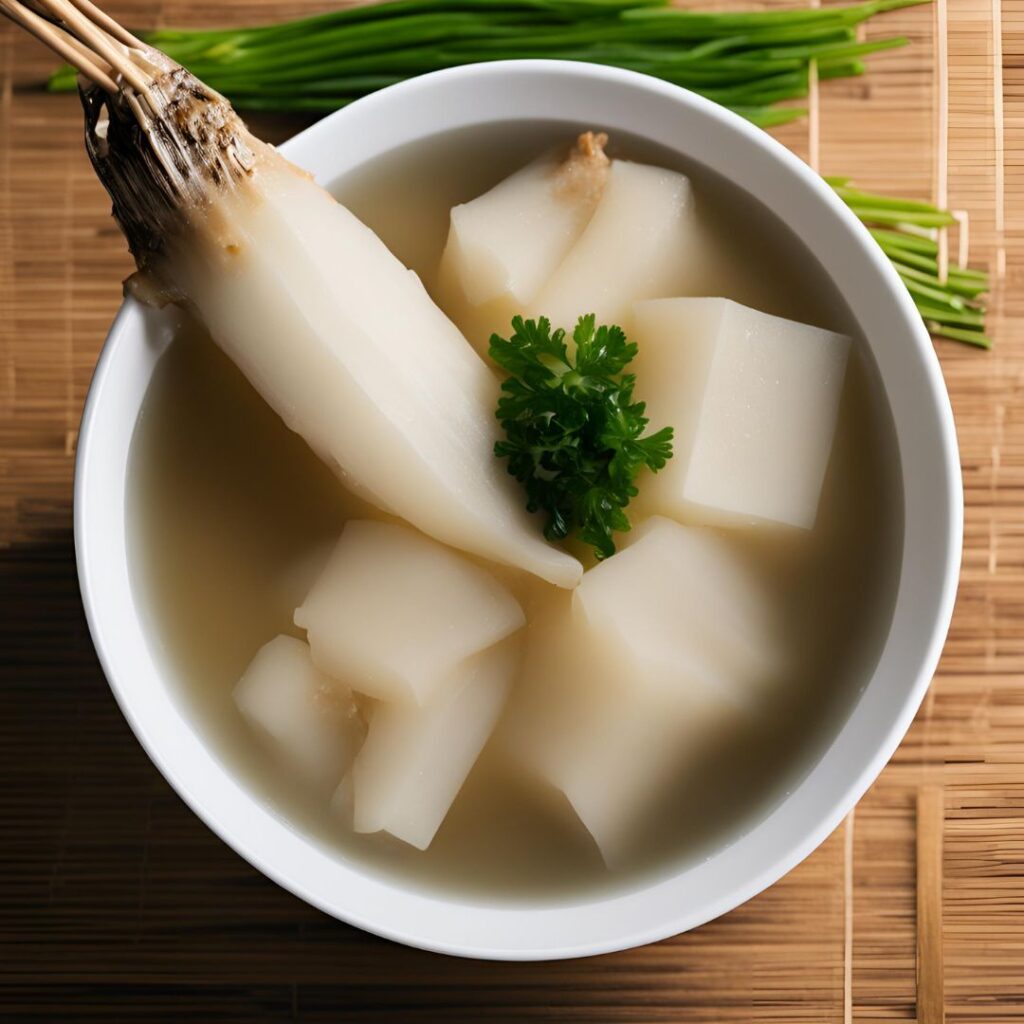Introduction
Vegetable Spaghetti with Dashi is an innovative and flavorful dish that marries the hearty comfort of Italian pasta with the delicate, umami-rich elements of Japanese cuisine. This unique recipe brings together spaghetti, fresh vegetables, and a savory dashi-based sauce enhanced with miso and tomatoes. My first experience with this fusion dish was at a friend’s dinner party, where the combination of familiar pasta textures and distinctive Japanese flavors left a lasting impression. It’s a perfect example of culinary creativity that transcends traditional boundaries.


Cultural Context
Dashi, a cornerstone of Japanese cuisine, is a broth made from ingredients like kombu (kelp) and shiitake mushrooms, offering a deep umami flavor. In Japan, dashi is used in a wide range of dishes, from soups to sauces. This recipe incorporates dashi into a tomato-based pasta sauce, creating a harmonious blend of East and West. While spaghetti is a staple of Italian cooking, its adaptation with dashi and miso paste demonstrates the versatility and global appeal of both cuisines.
Ingredient Spotlight
Shiitake Mushrooms: These mushrooms provide a rich, earthy flavor and are a key component of the dashi broth.
Miso Paste: Adds depth and umami to the sauce, balancing the acidity of the tomatoes.
Fresh Vegetables: Carrots, onions, bell peppers, and chickpeas contribute color, texture, and nutrition.
Konbu Shiitake Dashi: The base of the sauce, this broth infuses the dish with a subtle, savory flavor that complements the tomatoes and miso.
Vegetable Spaghetti with Dashi Health Benefits
This dish is packed with nutrients from fresh vegetables and chickpeas, providing a good source of fiber, vitamins, and plant-based protein. The miso paste adds probiotics, which are beneficial for gut health. Using olive oil instead of butter or cream keeps the dish relatively low in saturated fats, making it a heart-healthy choice.
Cooking Tips
Pasta Preparation: Cook the spaghetti until just before al dente to allow it to finish cooking in the sauce, absorbing more flavor.
Vegetable Browning: Sauté the vegetables until they start to brown to enhance their natural sweetness and add depth to the sauce.
Dashi Consistency: Adjust the amount of dashi or reserved pasta water to achieve your preferred sauce thickness.
Serving Suggestions
Serve the vegetable spaghetti in a large bowl, topped with freshly chopped Italian parsley, basil, and a sprinkle of grated parmesan or pecorino cheese. For an extra layer of flavor, garnish with kaiware daikon (radish sprouts) and a dash of freshly cracked black pepper. Pair this dish with a crisp white wine or a light, chilled sake to complement the umami notes.


Ingredients
2 cups fresh shiitake mushrooms,sliced
1 cup carrots, chopped into half moon pieces
1 cup onions, chopped ~ ¼ in. thick
1 cup bell pepper, coppeed ~ ¼ in. thick
½ tsp celery salt, alternatively 1 stalk celery with leaves finely chopped
3-4 Tbsp Extra virgin olive oil
3 large cloves garlic, crushed or finely chopped
1 – 2 cups konbu shiitake dashi, or konbu dashi; use less if you like thicker sauces, more for thinner sauces
¼ cup miso paste
2 cups chickpeas
28 oz can whole tomatoes, from Italy if possible*
1/4 lb. spaghetti per person, cooked until just before al dente**
For serving*
Italian parsley, Italian basil, Kaiware daikon (radish sprouts), shiso, green onions, freshly cracked pepper, freshly grated parmesan or pecorino cheese
Instructions
- Prepare your dashi and vegetables first and set aside. Remove shiitake mushrooms and slice ¼ in thick and set aside.
- Cook your pasta in salted water until just before al dente. Reserve about ½ cup pasta water to thin sauce, if desired. Then drain and set aside until sauce is ready.
- Using a large sauté pan on medium high heat, add olive oil, carrots, onions, shiitake, bell pepper, and celery salt. Cook for 4-5 minutes until they start to brown. Stir occasionally for browning to occur. (browning helps to bring out additional flavor).
- After the vegetables begin to brown, add garlic and cook for a minute until fragrant.
- Add in miso paste, all the tomatoes, and 1 cup of dashi. If you’d like a thinner sauce, you can add additional dashi or pasta water at this point.
- Cook sauce for another 15 minutes stirring occasionally.
- Once sauce has cooked, taste for flavor, you can add a few teaspoons of sugar or honey to sweeten or a bit of salt or soy sauce to make saltier.
- For 1 person, take ¼ lb. cooked spaghetti and return to the pot the noodles were cooking in. Add about 1 generous cup of sauce and cook on low heat for about 30 seconds and then serve!
- Top with desired toppings and enjoy!
Variations
Vegetables: Substitute with other favorites like okra, eggplant, zucchini, or various Japanese mushrooms (enoki, maitake, shimeji).
Chickpeas: Replace with cooked grains like farro or bulgur for added texture.
Protein: Add grilled chicken or tofu for a protein boost.
Conclusion
Vegetable Spaghetti with Dashi is a fusion dish that beautifully combines the best of Italian and Japanese culinary traditions. Its rich flavors and health benefits make it a delightful meal for any occasion. Try this recipe at home and share your experiences or any variations you’ve created in the comments below. I’m excited to hear how you’ve made this dish your own!








Konnichiwa! (Hello!) I'm Pat Tokuyama, a Japanese tofu cookbook author, who travels for music, food, and adventure. If you like Japanese tea, checkout some of the newestorganic japanese tea, matcha bowls and noren and more!
** Curious about the Plant Based Japanese Cooking Club? ** Learn more here!